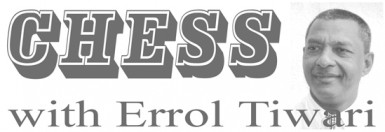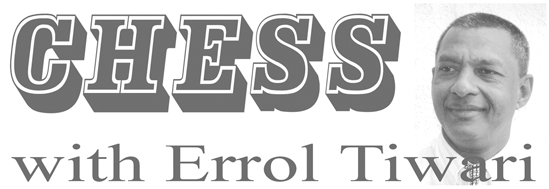In the Crosswords and Games page of The New York Times of April 20, 2013 there was a story about former world chess champion Garry Kasparov captioned ‘In Retirement, a Champion Is a Crusader for the Game.’ Kasparov retired from professional chess in 2005, but in retirement he is busier than ever. The Times carried the story as Kasparov turned 50 on April 13.
 An outspoken critic of President Putin of Russia, agitating for change, Kasparov has been lobbying officials in many countries to add chess to school curriculums, ‘’an effort that is likely to have more impact than his political activism,’’ according to the Times. His reasoning, supported by many educators, is that in learning chess, children are taught to think logically, to plan and to use mathematics in a practical way. It can even teach children good sportsmanship.
An outspoken critic of President Putin of Russia, agitating for change, Kasparov has been lobbying officials in many countries to add chess to school curriculums, ‘’an effort that is likely to have more impact than his political activism,’’ according to the Times. His reasoning, supported by many educators, is that in learning chess, children are taught to think logically, to plan and to use mathematics in a practical way. It can even teach children good sportsmanship.
Through Kasparov’s extensive contacts and the work by his foundation which has developed software to help teach the game, he has won the attention of many governments. Last year, the European Union endorsed Kasparov’s programme for its member states and encouraged them to introduce chess in their schools.
Kasparov’s income is augmented by speaking engagements. He also runs chess training camps for talented young players and has continued to write books on chess history. In honour of Kasparov’s birthday, his foundation has highlighted some of the games that he won in 50 moves, including the 11th game of the 1987 World Championship match against Anatoly Karpov.
This year, Kasparov was honoured by UN Watch, a non-governmental agency in Geneva with the Morris B Abram Human Rights Award, an honour named for a founder of the group.
Meanwhile, here is Bobby Fischer’s continuing comments in relation to his Ten Greatest Masters in History, the fourth in a series of ten.
Siegbert Tarrasch
Germany 1862 – 1934
“Chess players generally may be said to fall into two main divisions; the ones who have rules, axioms and master plans and stick to them dogmatically; and the ones who know the rules and axioms but who are quick to take advantage of unforeseen developments on the board. The best players must be a combination of the two while avoiding being either scavengers or opportunists. Tarrasch, as perhaps the prime representative of the German school, is much closer to the first category.
“He was a rule of thumb player: Knights should only be on B3, Knights on Q3 were bad always, for example; or Bishops are better than Knights no matter what the position.
This last rule may be sound nine out of ten times but one must be alert to that tenth instance when it is not. Steinitz made many rules, but considered himself above them, whereas Tarrasch always followed his own rules, but so brilliantly that he is among the greatest players.
‘Tarrasch’s play was razor-sharp, and in spite of his supposed devotion to this scientific method of play, his game was witty and bright. He was a great opening theorist, vastly superior in this respect to Emanuel Lasker, for example, who was a coffee-house player: Lasker knew nothing about openings and didn’t understand positional chess.
“Tarrasch ridiculed Steinitz for such measures as bringing his Queen out early in the game, on the second or third move, even though in certain cases, like the Scotch Gambit, Fraser variation, for example, it might win a pawn. Tarrasch was 30 years younger than Steinitz, but lacked his depth. But in spite of the Germanic background that lay on him so heavily, he was a great chess player.’’

